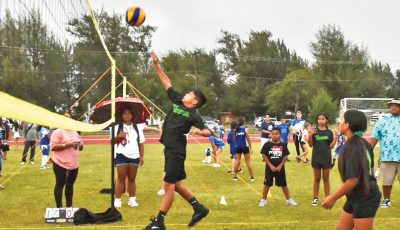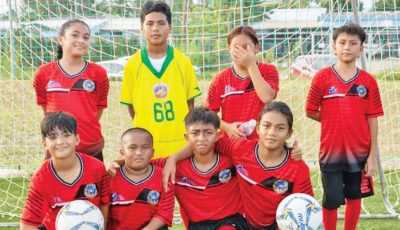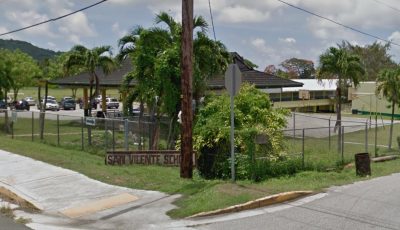SIOP® training for teachers
Sheltered Instructions Observation Protocol is the name of the PSS-sponsored all day training for teachers. The facilitator is a seasoned teacher who would rather be in the frontlines of teaching rather than be administering. We are glad.
I was with the Mustangs at Southern Methodist U in Dallas when the football team was so bad Johnny Carson of the Tonight Show quipped that even SMU “beat them.” Well, it was the opening of the 1968 season and a diminutive player named Jerry LeVias (at 140 lbs) was a wizard at catching thrown footballs, so the school won an impressive come-from-behind win of the season against the Aggies. Bragging rights were intense especially against A&M, a team rated nationally. The Mustangs by the Dallas Press’ thought them better poised for the sorority and fraternity parties. LeVias’ pioneered in the integration of the Southwest Conference’s football athletics though he was hardly welcomed on fraternity-sorority row!
Facilitator Martha Tejero of Mexican-descent who attended A&M at College Station in Texas used herself and personal stories to illustrate her deliveries, her presentation illustrating the practice of varying the kinesthetic every five minutes so as not to allow learners to get mentally weary.
The content of the SIOP training itself was cute, with many phrases for emphasis to distinguish differences. “Teachers use techniques to teach, while students strive with strategies to learn” was one I remember.
A textbook and a participant workbook almost totaling 500 pages, plus a handout of Bloom’s taxonomy of verbs are presented in two Saturdays (including tomorrow’s) from 8am to 4:30pm. That’s a challenge of Mt. Olympus proportion. The assumption is for the participants to look at the text again, and with the workbook for assistance, that is most likely.
Not! I teach Grade 1 where the attention span is, at best, five minutes (normal adults are worth 15 minutes but like the first graders, that’s a stretch). I have my first graders from 8am to 2:30pm with only a recess and a 40-minute lunch break where they are not under close academic scrutiny. That’s more than five hours of varying activities every five minutes! It is doable. It just requires a lot of preparation and techniques, patience and endurance. I can swing the first three; endurance gets to be taxing when one is over 70.
My students’ age ranges from 6-8, mostly at 7, with only two who avoided pre-school and Kindergarten, but they all have an assertive mind of their own. They developed a talkers’ skill from the first mimicking of Mama’s sound, and on first grade they are urged to “listen” since pedagogy at their level is heavy on “hear and repeat”.
Ms. Tejero uses herself and her family for recognizable illustrations. Her daughter who is also a teacher was content hitting 50 percent of her mark. Martha thought she should also receive only 50 percent pay! A teacher must not accept anything but 100 percent. If at first, one does not succeed… Sounds familiar? Cute, neh!
Her son separated himself from the protection and care of Mama’s roof and discovered more rain than sunshine. “Hard love” is not easy but it can be done for the sake of the other! Sounds like hard core Christendom.
Martha’s SIOP facilitation greases the skids for quicker and better understanding. Being a newbie in the new PSS (I was at SVES 2003-08 before heading for Sinosphere), teaching in Dong Bei (northeast) China near Korea’s Yalu River the last five years, I now adapt to the PSS’ appropriation of SIOP to promote academic cognition and generic learning.
I do find literacy as a third step in my map of the brainscape; the articulation of ideas and thoughts is preceded by raw sense experiences (sight, sound, smell, taste, touch), the expressions of unadulterated feelings, before articulation in words and numbers of the sense narratives and emotive expression, but not stopping there (otherwise one becomes just an academic egghead) but proceed to the deed, in formulated plans of proposals, strategies, implimentaries, and tactics.
Literacy is currently focused on K-3 at CNMI PSS with SIOP as the subscribed method along with many districts in the 50 States of the Union who adopted the Protocol for their curriculum.
SIOP is a model with eight identified components (lesson prep, background building, comprehensible input, strategies, interaction, practice and application, lesson delivery, and review and assessment) richly illustrated by the book and workshop’s authors, as well as the guiding facilitator. It invites teachers and students to recognize their natural processes, with a high emphasis on active listening, a prescription that runs against our propensity to train young talkers. Cleary, the model supports teachers in delivering high-quality instruction.
The second session is tomorrow at Kagman Elementary School again. Martha plays as well as a LeVias. We’ll play learning. We will have fun.



























